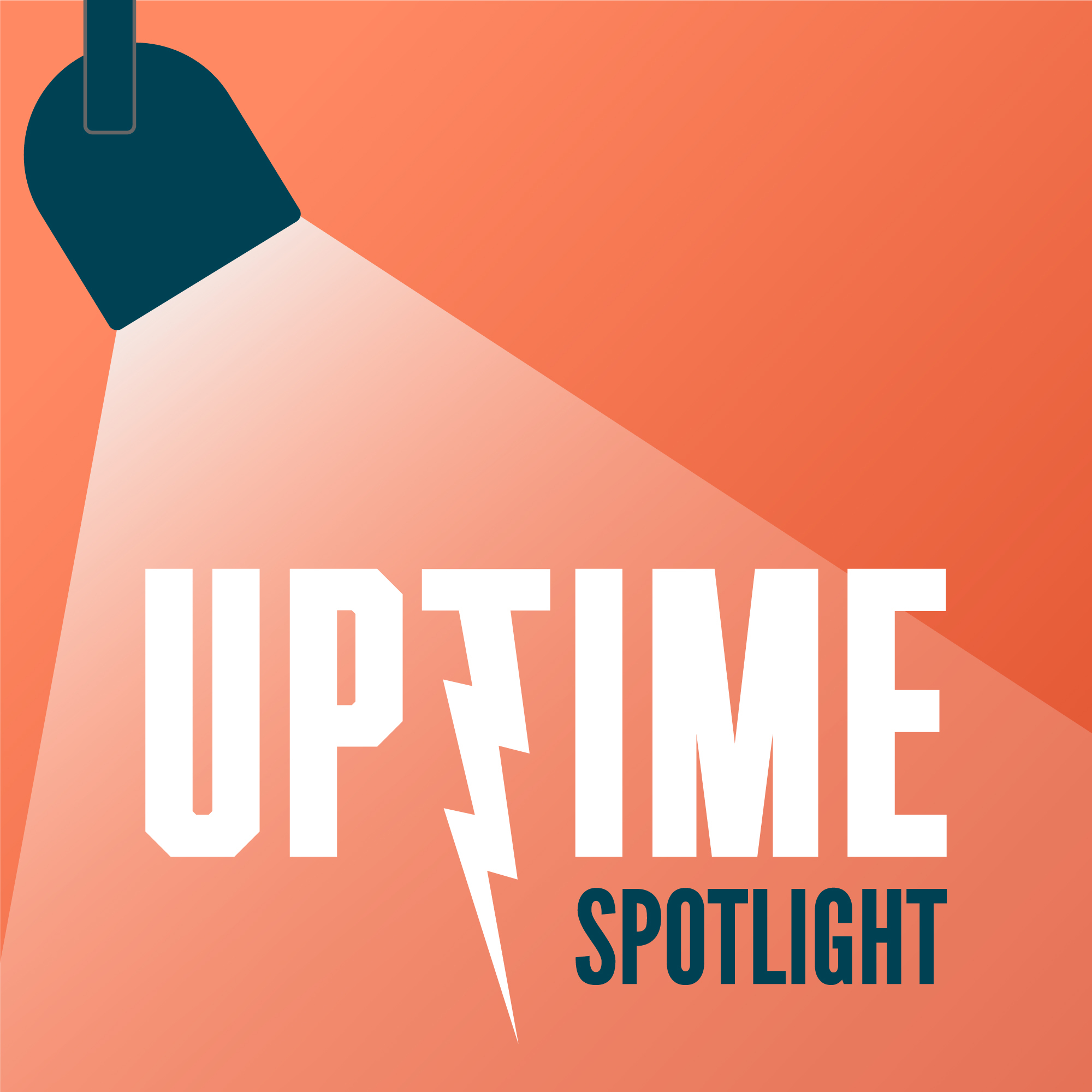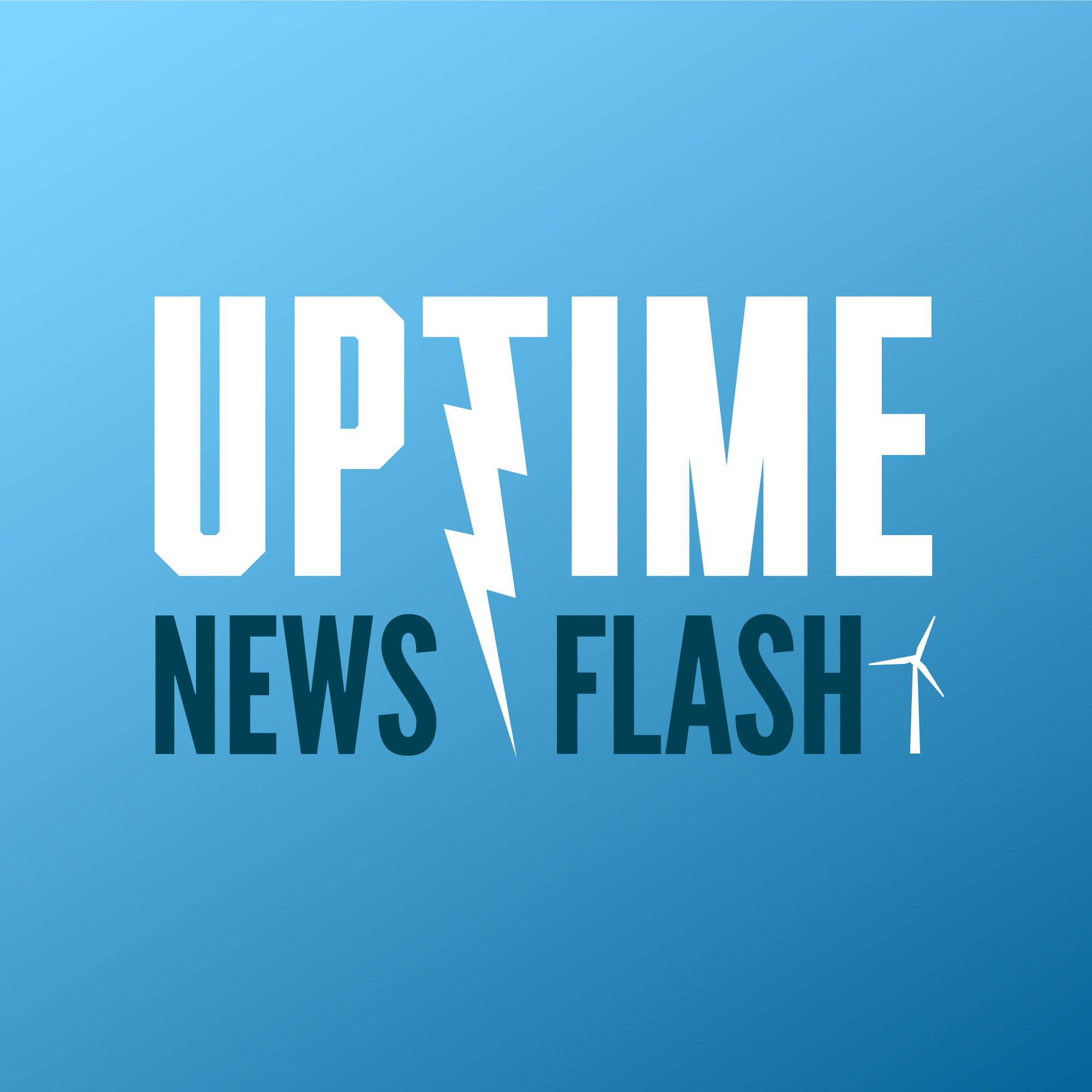Wind Impacts Railroad Safety? And Other False Flags
Update: 2025-08-26
Description
The crew discusses the Federal Department of Transportation's concerns over wind turbines interfering with railroads, the USDA's stance on renewable energy projects on farmland, new treasury rules for wind and solar projects, and highlight the Sunflower Wind Farm in Kansas for its community impact and operational success.
Sign up now for Uptime Tech News, our weekly email update on all things wind technology. This episode is sponsored by Weather Guard Lightning Tech. Learn more about Weather Guard's StrikeTape Wind Turbine LPS retrofit. Follow the show on Facebook, YouTube, Twitter, Linkedin and visit Weather Guard on the web. And subscribe to Rosemary Barnes' YouTube channel here. Have a question we can answer on the show? Email us!
You are listening to the Uptime Wind Energy Podcast brought to you by build turbines.com. Learn, train, and be a part of the Clean Energy Revolution. Visit build turbines.com today. Now here's your hosts, Allen Hall, Joel Saxon, Phil Totaro, and Rosemary Barnes.
Allen Hall: Welcome to the Uptime Wind Energy Podcast.
Hold on tight. I told my producer before we started, this is gonna be a. Bumpy rise. So for all our listeners, hold on. Uh, it's a lot of news in the wind and solar world at the minute. Phil Tarro is in California. Joel Saxon is back from Australia in Austin, Texas, and first up is the Federal Department of Transportation.
Complaining about how close wind turbines could be to railroads and create an interference, and it'd be a safety crisis. Uh, federal transportation officials and a new scientific research report, [00:01:00 ] Joel, are sounding an urgent alarm about wind turbines being. Too close to railroad tracks and a comprehensive study from California's Tehachapi Pass Wind Farm confirms, quote unquote confirms that wind farms can severely interfere with critical radio communications used by trains.
Now, uh, what they don't want you to do is to read the report. That's what they don't want you to do. And, uh, as a group of engineers, we're going to read the report and see what it says. And what it says is that they have a safety system on trains because they used to run into each other quite often. And what they've done is they have a overriding system that's run by radio communication that if a train goes too fast and some of these more frequented train tracks or in.
High density population bases like Chicago or Baltimore, one of these places that they can actually slow the train down or stop the train in some cases, what it sounds like if they're [00:02:00 ] on a collision course, and that becomes important on commuter rails. And, um, if they have toxic chemicals on trains, that they don't want them to have accidents.
So they put the system in. And the system is based on Joel. The world's oldest communication form.
Joel Saxum: It's VHF radio, right? So to those of you that don't know what VHF radio is, it's basically like, uh, close to the frequencies you'd use as a walkie-talkie as a kid. Um hmm. Right. Uh, or a CB radio. Right. We're, we're quite a ways past that now.
Uh, so wifi, cell modems, satellite communications are all regular things within basically any other industry. Uh, of course, but this one, yeah, we're still using VHF technology that we used. I, that's been around for a long time for radio communication back from World War ii. Or before that? Oh yeah.
Allen Hall: Right around World War ii.
How far do those, uh, walkie-talkie radios typically
Joel Saxum: work? Well, it depends if you, I guess if it depends if you buy 'em from Walmart or if you buy 'em a, [00:03:00 ] a, a professional one. But, uh, depending on what watt radio is in 'em, I mean mile two miles maybe.
Allen Hall: Exactly. And that's how this train system works. So every.
Couple of miles, they have a repeater to transmit the signal up and down the train tracks. Well, it became really important because, you know,
Sign up now for Uptime Tech News, our weekly email update on all things wind technology. This episode is sponsored by Weather Guard Lightning Tech. Learn more about Weather Guard's StrikeTape Wind Turbine LPS retrofit. Follow the show on Facebook, YouTube, Twitter, Linkedin and visit Weather Guard on the web. And subscribe to Rosemary Barnes' YouTube channel here. Have a question we can answer on the show? Email us!
You are listening to the Uptime Wind Energy Podcast brought to you by build turbines.com. Learn, train, and be a part of the Clean Energy Revolution. Visit build turbines.com today. Now here's your hosts, Allen Hall, Joel Saxon, Phil Totaro, and Rosemary Barnes.
Allen Hall: Welcome to the Uptime Wind Energy Podcast.
Hold on tight. I told my producer before we started, this is gonna be a. Bumpy rise. So for all our listeners, hold on. Uh, it's a lot of news in the wind and solar world at the minute. Phil Tarro is in California. Joel Saxon is back from Australia in Austin, Texas, and first up is the Federal Department of Transportation.
Complaining about how close wind turbines could be to railroads and create an interference, and it'd be a safety crisis. Uh, federal transportation officials and a new scientific research report, [00:01:00 ] Joel, are sounding an urgent alarm about wind turbines being. Too close to railroad tracks and a comprehensive study from California's Tehachapi Pass Wind Farm confirms, quote unquote confirms that wind farms can severely interfere with critical radio communications used by trains.
Now, uh, what they don't want you to do is to read the report. That's what they don't want you to do. And, uh, as a group of engineers, we're going to read the report and see what it says. And what it says is that they have a safety system on trains because they used to run into each other quite often. And what they've done is they have a overriding system that's run by radio communication that if a train goes too fast and some of these more frequented train tracks or in.
High density population bases like Chicago or Baltimore, one of these places that they can actually slow the train down or stop the train in some cases, what it sounds like if they're [00:02:00 ] on a collision course, and that becomes important on commuter rails. And, um, if they have toxic chemicals on trains, that they don't want them to have accidents.
So they put the system in. And the system is based on Joel. The world's oldest communication form.
Joel Saxum: It's VHF radio, right? So to those of you that don't know what VHF radio is, it's basically like, uh, close to the frequencies you'd use as a walkie-talkie as a kid. Um hmm. Right. Uh, or a CB radio. Right. We're, we're quite a ways past that now.
Uh, so wifi, cell modems, satellite communications are all regular things within basically any other industry. Uh, of course, but this one, yeah, we're still using VHF technology that we used. I, that's been around for a long time for radio communication back from World War ii. Or before that? Oh yeah.
Allen Hall: Right around World War ii.
How far do those, uh, walkie-talkie radios typically
Joel Saxum: work? Well, it depends if you, I guess if it depends if you buy 'em from Walmart or if you buy 'em a, [00:03:00 ] a, a professional one. But, uh, depending on what watt radio is in 'em, I mean mile two miles maybe.
Allen Hall: Exactly. And that's how this train system works. So every.
Couple of miles, they have a repeater to transmit the signal up and down the train tracks. Well, it became really important because, you know,
Comments
In Channel







